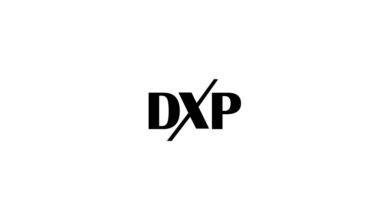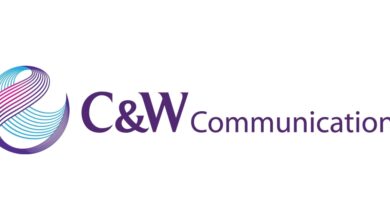Global Pharma, Biotech & Diagnostics Co-promotion and Co-marketing Partnering Terms and Agreements Report/Directory 2014-2021, Revised and Updated for Q4 2021 – ResearchAndMarkets.com

DUBLIN–(BUSINESS WIRE)–The “Global Co-promotion and Co-marketing Partnering Terms and Agreements in Pharma, Biotech & Diagnostics 2014-2021” report has been added to ResearchAndMarkets.com’s offering.
The Global Co-promotion and Co-marketing Partnering Terms and Agreements in Pharma, Biotech and Diagnostics 2014-2021 report provides comprehensive understanding and unprecedented access to the co-promotion and co-marketing partnering agreements entered into by the worlds leading biopharma companies.
This report provides details of the latest co-promotion and co-marketing agreements announced in the pharmaceutical, biotechnology and diagnostic sectors. Fully revised and updated, the report covers details of co-promotion and co-marketing agreements from 2014 to 2021.
For pharmaceutical and biotechnology professionals, the report supplies a detailed understanding and analysis of how and why companies enter co-promotion and co-marketing deals. The majority of deals are multicomponent whereby the licensor retains either a right or option to co-promote/market the resultant product of the research collaboration. There are also numerous pure co-promotion/marketing deals whereby the products originator takes on a co-promotion/marketing partner in order to maximize a products presence in the marketplace.
Understanding the flexibility of a prospective partner’s negotiated deals terms provides critical insight into the negotiation process in terms of what you can expect to achieve during the negotiation of terms. Whilst many smaller companies will be seeking details of the payments clauses, the devil is in the detail in terms of how payments are triggered – contract documents provide this insight where press releases and databases do not.
This report contains a comprehensive listing of all co-promotion and co-marketing deals announced since 2014 as recorded in the deals and alliances database, including financial terms where available, plus links to online copies of actual co-promotion and co-marketing contract documents as submitted to the Securities Exchange Commission by companies and their partners.
The report includes deals announced by hundreds of life science companies including big pharma such as Abbott, Abbvie, Actavis, Amgen, Astellas, AstraZeneca, Baxter, Bayer, Biogen Idec, BMS, Celgene, Eisai, Eli Lilly, Gilead, GSK, J&J, Kyowa Hakko, Merck, Mitsubishi, Mylan, Novartis, Pfizer, Roche, Sanofi, Shire, Takeda, Teva, and Valeant, amongst many others.
Key benefits
Global Co-promotion and Co-marketing Partnering Terms and Agreements in Pharma, Biotech and Diagnostics 2014-2021 includes:
- Trends in co-promotion and co-marketing dealmaking in the biopharma industry since 2014
- Analysis of co-promotion and co-marketing deal structure
- Case studies of real-life co-promotion and co-marketing deals
- Detailed access to actual co-promotion contract documents
- The leading co-promotion and co-marketing deals by value since 2014
- Most active co-promotion and co-marketing dealmakers since 2014
- The leading co-promotion and co-marketing partnering resources
Available contracts are listed by:
- Company A-Z
- Headline value
- Stage of development at signing
- Therapeutic area
- Technology area
Analyzing actual contract agreements allows assessment of the following:
- What are the precise co-promotion and co-marketing rights granted or optioned?
- What is actually granted by the agreement to the partner company?
- What exclusivity is granted?
- What is the payment structure for the deal?
- How are sales and payments audited?
- What is the deal term?
- How are the key terms of the agreement defined?
- How are IPRs handled and owned?
- Who is responsible for commercialization?
- Who is responsible for development, supply, and manufacture?
- How is confidentiality and publication managed?
- How are disputes to be resolved?
- Under what conditions can the deal be terminated?
- What happens when there is a change of ownership?
- What sublicensing and subcontracting provisions have been agreed?
- Which boilerplate clauses does the company insist upon?
- Which boilerplate clauses appear to differ from partner to partner or deal type to deal type?
- Which jurisdiction does the company insist upon for agreement law?
Key Topics Covered:
Executive Summary
Chapter 1 – Introduction
Chapter 2 – Trends in co-promotion and co-marketing dealmaking
2.1. Introduction
2.2. Difference between co-promotion and co-marketing deals
2.3. Trends in co-promotion deals since 2014
2.3.1. Co-promotion and co-marketing dealmaking by year, 2014 to 2021
2.3.2. Co-promotion and co-marketing dealmaking by phase of development, 2014 to 2021
2.3.3. Co-promotion and co-marketing dealmaking by industry sector, 2014 to 2021
2.3.4. Co-promotion and co-marketing dealmaking by therapy area, 2014 to 2021
2.3.5. Co-promotion and co-marketing dealmaking by technology type, 2014 to 2021
2.3.6. Co-promotion and co-marketing dealmaking by most active company, 2014 to 2021
2.4. When co-marketing can be useful
2.5. When co-marketing is the only option
2.6. Pure deals and multi-component deals
2.6.1. Attributes of pure co-promotion deals
2.6.2. Attributes of co-promotion in multi-component deals
2.7. Reasons for including co-promotion options in a deal
2.8. Uptake of co-promotion rights
2.9. Co-promotion rights as bargaining chips
2.10. Aligning partners to make the co-promote work
2.11. The future of co-promotion as part of multicomponent deals
Chapter 3 – Overview of co-promotion deal structure
3.1. Introduction
3.2. Pure versus multi-component co-promotion deals
3.3. Pure co-promotion agreement structure
3.3.1. Example co-promotion agreements
3.3.1.a. Case study 1: Allergan – MAP Pharmaceuticals
3.3.1.b. Case study 2: Genzyme – Veracyte
3.4. Co-promotion rights as part of a wider alliance agreement
3.4.1. Example co-promotion option clauses
3.4.1.a. Case study 3: Takeda Pharmaceutical- Orexigen Therapeutics
3.4.1.b. Case study 4: Celgene – Acceleron Pharma
3.4.2. Example co-promotion right clauses
3.4.2.a. Case study 5: Takeda – Orexigen
3.4.2.b. Case study 6: Abbvie – Receptos
3.5. Embedded co-promotion rights enabling third party engagement
3.5.1. Example co-promotion clauses enabling third party engagement
3.5.1.a. Case study 7: Astellas – Ambit Biosciences
Chapter 4 – Overview of co-marketing deal structure
4.1. Introduction
4.2. Co-marketing agreement structure
4.2.1. Example co-marketing agreements
4.2.1.a. Case study 8: AstraZeneca -Ironwood Pharmaceuticals
4.3. Co-marketing rights as part of a wider alliance agreement
4.3.1. Example co-marketing right clauses
4.3.1.a. Case study 9: Lundbeck – Myriad Genetics
Chapter 5 – Leading co-promotion and co-marketing deals
5.1. Introduction
5.2. Top co-promotion and co-marketing deals by value
Chapter 6 – Top 25 most active co-promotion and co-marketing dealmakers
6.1. Introduction
6.2. Top 25 most active co-promotion and co-marketing dealmakers
Chapter 7 – Co-promotion and co-marketing agreement contracts directory 2014- 2021
7.1. Introduction
7.2. Co-promotion and co-marketing deals with contracts 2014 to 2021
Appendices
Appendix 1 – Co-promotion and co-marketing deals by company A-Z
Appendix 2 – Co-promotion and co-marketing deals by stage of development
Appendix 3 – Co-promotion and co-marketing deals by deal type
Appendix 4 – Co-promotion and co-marketing deals by therapy area
Appendix 5 – Co-promotion and co-marketing deals by technology type
Appendix 6 -Deal type definitions
For more information about this report visit https://www.researchandmarkets.com/r/nb0wax
Contacts
ResearchAndMarkets.com
Laura Wood, Senior Press Manager
[email protected]
For E.S.T Office Hours Call 1-917-300-0470
For U.S./CAN Toll Free Call 1-800-526-8630
For GMT Office Hours Call +353-1-416-8900



